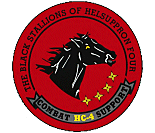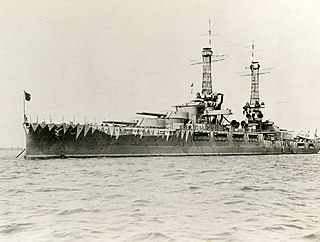 W
WThe Chief of Naval Operations (CNO) is the highest-ranking active duty member of the United States Navy and is a member of the Joint Chiefs of Staff. The CNO reports directly to the Secretary of the Navy for the command, utilization of resources and operating efficiency of the Navy. Of the 29 CNOs, 27 were graduates of the United States Naval Academy (USNA). The Academy is an undergraduate college in Annapolis, Maryland, with the mission of educating and commissioning officers for the Navy and Marine Corps. The Academy is often referred to as Annapolis, while sports media refer to the Academy as "Navy" and the students as "Midshipmen"; this usage is officially endorsed. During the latter half of the 19th century and the first decades of the 20th, the United States Naval Academy was the primary source of U.S. Navy and Marine Corps officers, with the Class of 1881 being the first to provide officers to the Marine Corps. Graduates of the Academy are also given the option of entering the United States Army or United States Air Force. Most Midshipmen are admitted through the congressional appointment system. The curriculum emphasizes various fields of engineering.
 W
WThe United States Naval Academy (USNA) is an undergraduate college in Annapolis, Maryland with the mission of educating and commissioning officers for the United States Navy and Marine Corps. The Academy was founded in 1845 and graduated its first class in 1846. The Academy is often referred to as Annapolis, while sports media refer to the Academy as "Navy" and the students as "Midshipmen"; this usage is officially endorsed. During the latter half of the 19th century and the first decades of the 20th, the United States Naval Academy was the primary source of U.S. Navy and Marine Corps officers, with the Class of 1881 being the first to provide officers to the Marine Corps. Graduates of the Academy are also given the option of entering the United States Army or United States Air Force. Most Midshipmen are admitted through the congressional appointment system. The curriculum emphasizes various fields of engineering.
 W
WThis is a complete list of four-star admirals in the United States Navy. The rank of admiral is the highest rank normally achievable in the U.S. Navy. It ranks above vice admiral and below fleet admiral.
 W
WNaval aircraft currently used by the United States Navy and the United States Marine Corps. For a complete list of naval aircraft designated under the pre-1962 United States Navy designation system, see List of military aircraft of the United States (naval). For a list of naval aircraft designated under the post-1962 unified Department of Defense designations, see List of military aircraft of the United States.
 W
WHelicopter Combat Support Squadron FOUR (HC-4) was a United States Navy helicopter squadron based at Naval Air Station Norfolk, Virginia. Nicknamed the "Black Stallions", they flew the Sikorsky CH-53E Super Stallion and MH-53E Sea Dragon helicopters.
 W
WTail codes on the U.S. Navy aircraft are the markings that help to identify the aircraft's unit and/or base assignment. These codes comprise one or two letters or digits painted on both sides of the vertical stabilizer, on the top right and on the bottom left wings near the tip. Although located both on the vertical stabilizer and the wings from their inception in July 1945, these identification markings are commonly referred as tail codes. It is important to note that tail codes are meant to identify units and assignments, not individual aircraft. For all aircraft of the U.S. Navy and U.S. Marine Corps unique identification is provided by bureau numbers.
 W
WOver 50 United States astronauts have graduated from the United States Naval Academy (USNA), more than from any other undergraduate institution. The Naval Academy is an undergraduate college in Annapolis, Maryland with the mission of educating and commissioning officers for the United States Navy and Marine Corps. The Academy is often referred to as Annapolis. Sports media refer to the Academy as "Navy" and the students as "Midshipmen"; this usage is officially endorsed. During the latter half of the 19th century and the first decades of the 20th, the United States Naval Academy was the primary source of U.S. Navy and Marine Corps officers, with the Class of 1881 being the first to provide officers to the Marine Corps. Graduates of the Academy are also given the option of entering the United States Army or United States Air Force; known as cross-commissioning. Most Midshipmen are admitted through the congressional appointment system. The curriculum emphasizes various fields of engineering. Annapolis graduates who enter aviation and space-related fields have the opportunity to be selected for astronaut training by the National Aeronautics and Space Administration (NASA).
 W
WThe naval battles of the American Civil War, fought between the Union and the Confederacy, changed the foundations of naval warfare with the first use of ironclads and submarines, and the introduction of newer and more powerful naval artillery.
 W
WThe first automotive torpedo was developed in 1866, and the torpedo boat was developed soon after. In 1898, while the Spanish–American War was being fought in the Caribbean and the Pacific, Assistant Secretary of the Navy Theodore Roosevelt wrote that the Spanish torpedo boat destroyers were the only threat to the American navy, and pushed for the acquisition of similar vessels. On 4 May 1898, the US Congress authorized the first sixteen torpedo boat destroyers and twelve seagoing torpedo boats for the United States Navy.
 W
WThe United States Navy had a sizable fleet of escort aircraft carriers during World War II and the era that followed. These ships were both quicker and cheaper to build than larger fleet carriers and were built in great numbers to serve as a stop-gap measure when fleet carriers were too few. However, they were usually too slow to keep up with naval task forces and would typically be assigned to amphibious operations, often seen in the Pacific war's island hopping campaign, or to convoy protection in the war in the Atlantic.
 W
WThis is a listing of commandants and commanders of the Guantanamo Bay Naval Base, located in Guantánamo Bay on Cuba.
 W
WAmerican units that operated the F-4 Phantom II are listed below.
 W
WThe United States Naval Academy is an undergraduate college in Annapolis, Maryland with the mission of educating and commissioning officers for the United States Navy and Marine Corps. The Academy is often referred to as Annapolis, while sports media refer to the Academy as "Navy" and the students as "Midshipmen"; this usage is officially endorsed. During the latter half of the 19th century and the first decades of the 20th, the United States Naval Academy was the primary source of U.S. Navy and Marine Corps officers, with the Class of 1881 being the first to provide officers to the Marine Corps. Graduates of the Academy are also given the option of entering the United States Army or United States Air Force. Most Midshipmen are admitted through the congressional appointment system. The curriculum emphasizes various fields of engineering.
 W
WThis is a list of Military Sealift Command ships. The fleet includes about 130 ships in eight programs: Fleet Oiler (PM1), Special Mission (PM2), Strategic Sealift (PM3), Tow, Salvage, Tender, and Hospital Ship (PM4), Sealift (PM5), Combat Logistics Force (PM6), Expeditionary Mobile Base, Amphibious Command Ship, and Cable Layer (PM7) and Expeditionary Fast Transport (PM8).
 W
WIn the United States Navy, a rate is the military rank of an enlisted sailor, indicating where an enlisted sailor stands within the chain of command, and also defining one's pay grade. However, in the U.S. Navy, only officers carry the term rank, while it is proper to refer to an enlisted sailor's pay grade as rate. The same term also refers to one's area of occupational specialization within the enlisted Navy. Associated with the enlisted pay grades is a numbering system from the most junior enlisted sailor ("E-1") to the most senior enlisted sailor ("E-9"). This enlisted numbering system is the same across all five branches of the U.S. military. All E-1 through E-3 are known as seamen. E-4 through E-6 are called petty officers. All E-7s are called chief petty officer, E-8s senior chief petty officer, and E-9s master chief petty officer. Rates are displayed on a rating badge, which is a combination of rate and rating. E-2s and E-3s have color-coded group rate marks based on their career field. Personnel in pay grade E-1, since 1996, do not have an insignia to wear.
 W
WUnited States Navy ratings are general enlisted occupations used by the U.S. Navy from the 18th century, which consisted of specific skills and abilities. Each naval rating had its own specialty badge, which is worn on the left sleeve of the uniform by each enlisted person in that particular field. Working uniforms, such as coveralls and the camouflage Naval Working Uniform, bear generic rate designators with no rating insignia attached. For a brief period from September 2016 to December 2016, ratings were not used. However, they were reintroduced in December 2016 and remain in use. U.S. naval ratings are the equivalent of military occupational specialty codes used by the United States Army and the United States Marine Corps, the ratings system used by the United States Coast Guard, and Air Force Specialty Codes (AFSC) used by the United States Air Force.
 W
WThe United States Navy maintains a number of its ships as part of a reserve fleet, often called the "Mothball Fleet". While the details of the maintenance activity have changed several times, the basics are constant: keep the ships afloat and sufficiently working as to be reactivated quickly in an emergency.
 W
WThese United States submarines were lost either to enemy action or to "storm or perils of the sea."
 W
WUSS Oklahoma was a battleship that served in the United States Navy from 2 May 1916, to 1 September 1944. The ship capsized and sank during the attack on Pearl Harbor on 7 December 1941, but she was righted in 1943. While other ships sunk during the Pearl Harbor attack were repaired and returned to service, she was not and never returned to duty. Instead, Oklahoma was stripped of guns and superstructure, and sold for scrap. She sank while under tow to the mainland on 17 May 1947, 500 miles (800 km) northeast of Hawaii.
 W
WMany vessels named after women have seen military service with the United States military. Most of these were named in civilian service and then subsequently commissioned into the United States Navy.
 W
WList of United States Navy and Coast Guard ships lost during World War II, from 31 October 1941 to 31 December 1946, sorted by type and name. This listing also includes constructive losses which are ships that were damaged beyond economical repair and disposed of.